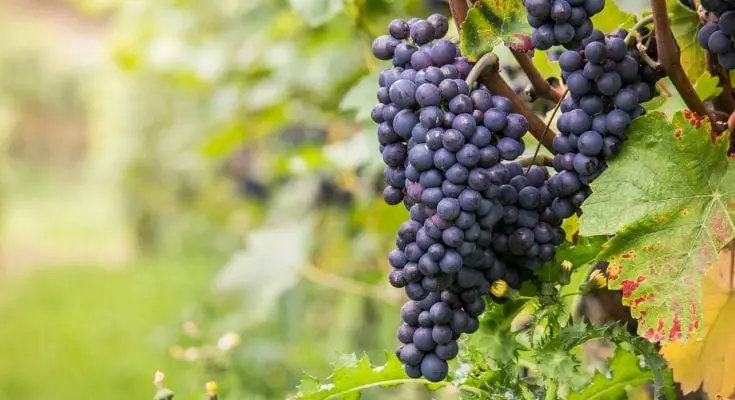With smooth tannins and a taste of fruit, most people put Pinot Noir in the list of elite grapes for winemaking. Although not the most common grape, it seems to exceed most other wines in terms of quality. Of course, with quality comes a higher price tag and this is why there’s an air of luxury around this particular grape and wine.
When drinking a Pinot Noir, know that winemakers were under extreme pressure to make the product because the grape itself is notoriously difficult to grow. With the right Pinot Noir, you have what many consider to be the ‘creme de la creme’ of wine – in other words, the best you’re likely to find.
The Pinot Noir Grape
As you know, all good wines start with grapes, and the Pinot Noir grape has a thinner skin than most other types of grape. As a result, diseases often take over the fields and affect the harvest in vineyards. As well as powdery mildew, the grape is affected by fan leaf bunch rot and leaf roll. Another reason why the grape is so difficult to grow is that it doesn’t take much frost, rain, or wind to cause damage.
For winemakers, it’s a difficult balance between cropping the vine to keep the grapes healthy and cropping too much and potentially cutting the yield significantly. For this reason, those working with the Pinot Noir grape normally have lots of experience and knowledge in the field.
For those salivating at the thought of drinking a luxurious Pinot Noir, the taste itself is fragrant and contains the character of red berries; some people compare the Pinot Noir grape to strawberry and raspberry. However, it’s not all sweet because it normally also comes with a kick (some even believe that this is a Cola-flavoured spice!).
If not ripe, the grape has an earthy and minty quality. However, this soon transforms into the berry flavour that wine drinkers around the world have all come to know and love. What if the grape is overripe? This creates a jammy texture. When in the bottle, Pinot Noir matures over time and gains game, truffle, and leather tones.
Facts About Pinot Noir
You know the basics, but what else should you know about Pinot Noir?
Firstly, despite the difficulties, these grapes are actually grown all over the world. Popular varieties come from Burgundy in France, but this doesn’t stop alternatives coming from Australia, New Zealand, Italy, Argentina, Chile, and even in the United States (California and Oregon, in particular!).
Secondly, Pinot Noir is one of the biggest reasons why the rule that dark colour offers deep flavour (and vice versa) is wrong. Speak to any experienced wine drinker at the Mudbar restaurante in Launceston and they’ll tell you that the colour of the wine reveals everything. Even though Pinot Noir is a light colour, it’s full of flavour. The colour of any wine is determined by the concentration of anthocyanin – in this case, Pinot Noir has a low concentration, and this is why the wine is light.
Thirdly, Pinot Noir wine tends to have a dry taste similar to the majority of red wines. Even the fruity nose can’t change this fact – the red berry flavour also extends to pomegranates, cherries, and cranberries for some.
Finally, it largely depends on the style, but some Pinot Noir bottles age for up to 40 years. When champagne is made from Pinot Noir grapes, it has a longer life than red wine made from the same grape.
As a bonus fact, those planning a dinner party with this luxurious wine shouldn’t worry about the menu since it pairs well with most foods!



